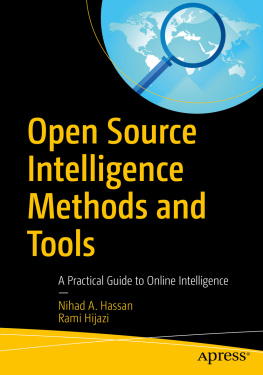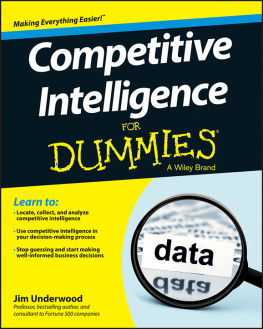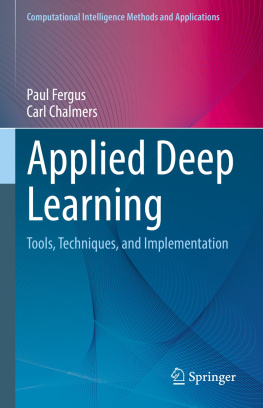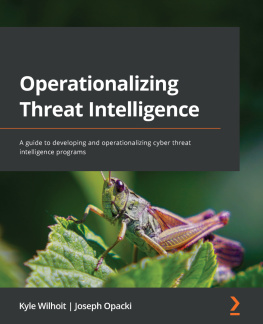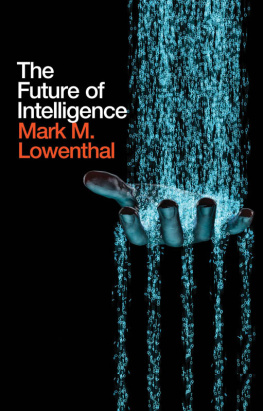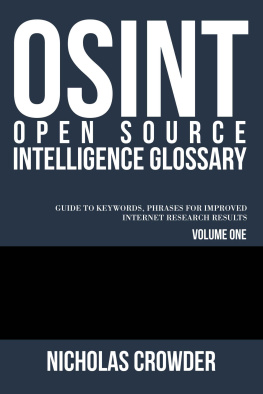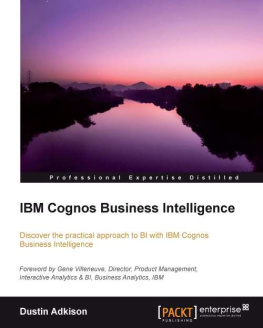Nihad A. Hassan - Open Source Intelligence Methods and Tools: A Practical Guide to Online Intelligence
Here you can read online Nihad A. Hassan - Open Source Intelligence Methods and Tools: A Practical Guide to Online Intelligence full text of the book (entire story) in english for free. Download pdf and epub, get meaning, cover and reviews about this ebook. year: 2018, publisher: Apress, genre: Computer. Description of the work, (preface) as well as reviews are available. Best literature library LitArk.com created for fans of good reading and offers a wide selection of genres:
Romance novel
Science fiction
Adventure
Detective
Science
History
Home and family
Prose
Art
Politics
Computer
Non-fiction
Religion
Business
Children
Humor
Choose a favorite category and find really read worthwhile books. Enjoy immersion in the world of imagination, feel the emotions of the characters or learn something new for yourself, make an fascinating discovery.
- Book:Open Source Intelligence Methods and Tools: A Practical Guide to Online Intelligence
- Author:
- Publisher:Apress
- Genre:
- Year:2018
- Rating:3 / 5
- Favourites:Add to favourites
- Your mark:
Open Source Intelligence Methods and Tools: A Practical Guide to Online Intelligence: summary, description and annotation
We offer to read an annotation, description, summary or preface (depends on what the author of the book "Open Source Intelligence Methods and Tools: A Practical Guide to Online Intelligence" wrote himself). If you haven't found the necessary information about the book — write in the comments, we will try to find it.
Apply Open Source Intelligence (OSINT) techniques, methods, and tools to acquire information from publicly available online sources to support your intelligence analysis. Use the harvested data in different scenarios such as financial, crime, and terrorism investigations as well as performing business competition analysis and acquiring intelligence about individuals and other entities. This book will also improve your skills to acquire information online from both the regular Internet as well as the hidden web through its two sub-layers: the deep web and the dark web.
The author includes many OSINT resources that can be used by intelligence agencies as well as by enterprises to monitor trends on a global level, identify risks, and gather competitor intelligence so more effective decisions can be made. You will discover techniques, methods, and tools that are equally used by hackers and penetration testers to gather intelligence about a specific target online. And you will be aware of how OSINT resources can be used in conducting social engineering attacks.
Open Source Intelligence Methods and Tools takes a practical approach and lists hundreds of OSINT resources that can be used to gather intelligence from online public sources. The book also covers how to anonymize your digital identity online so you can conduct your searching activities without revealing your identity.
What Youll Learn
Identify intelligence needs and leverage a broad range of tools and sources to improve data collection, analysis, and decision making in your organization
Use OSINT resources to protect individuals and enterprises by discovering data that is online, exposed, and sensitive and hide the data before it is revealed by outside attackers
Gather corporate intelligence about business competitors and predict future market directions
Conduct advanced searches to gather intelligence from social media sites such as Facebook and Twitter
- Understand the different layers that make up the Internet and how to search within the invisible web which contains both the deep and the dark webs
Who This Book Is For
Penetration testers, digital forensics investigators, intelligence services, military, law enforcement, UN agencies, and for-profit/non-profit enterprises
Nihad A. Hassan: author's other books
Who wrote Open Source Intelligence Methods and Tools: A Practical Guide to Online Intelligence? Find out the surname, the name of the author of the book and a list of all author's works by series.

